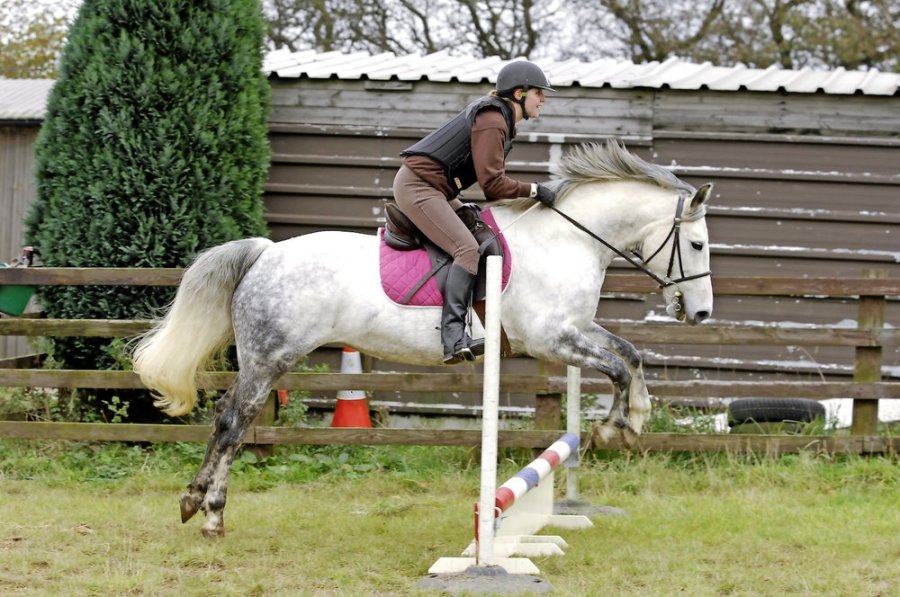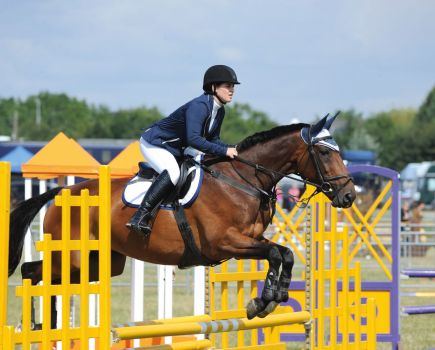Question
What is the correct jumping position, and how can I achieve it?
Answer
The correct position should see the rider form a straight line from their shoulder, through their elbow and knee and down towards the ball of their foot. There should be a bit of room between their body and their horse’s withers.
To do this on the ground, stand on a plank or the bottom of a lorry ramp so your feet are off the floor, allowing you to put weight down into your heels. Keep your shoulders down and make sure you stick your bottom out to give you the correct position.
Question
My horse show jumped to a high level with his previous owner, but I won’t be competing him.
I want to ensure he stays fit, so should I jump him every day and what kind of routine would you recommend for him?
Answer
I wouldn’t jump him every day as this will put too much strain on his joints. Just like you and I, your horse needs a break from doing the same thing every day so I’d recommend jumping him three times a week at most. This should be at a comfortable height, with the focus
on doing it correctly and not rushing. On the days you don’t jump you can do some hacking and flatwork.
Question
Can you recommend any jumping exercises to improve a horse’s confidence after suffering a fall over a jump?
Answer
Start by jumping small fences and avoiding gridwork, as this may ask too much of your horse. Start by approaching a small cross-pole on an even stride. Cross-poles are very approachable for your horse and can help to ease him gently into jumping again. Don’t move on from a cross-pole until you feel happy that your horse is relaxed and happy. Then you can start adding in small uprights with the aim of progressing on to fillers. Don’t rush your horse. The main thing to remember is that you’re trying to improve his confidence – and not jump a big jump.
Don’t miss the latest issue of Your Horse Magazine, jam-packed with training and veterinary advice, horse-care tips and the latest equestrian products available on shop shelves, on sale now.









